Elucidation of the molecular effects of drought on bread wheat seeds
– To avoid yield and flour quality decline due to drought stress –
Points of the Research
- Gene expression and metabolite changes that occur during the ripening process of bread wheat seeds were found distinctive.
- Amino acids that make up seed storage proteins were found to contribute to normal seed maturation under drought stress.
- Expected to become new breeding target traits in developing strains suitable for dryland cultivation.
Outline
The impact of recent climate change on bread wheat production areas, such as drought, is a major cause of reduced crop yields, raising concerns about the production and security of food to feed the world’s ever-growing population. In addition, there are concerns that if stress is applied to bread wheat during the seed maturation stage, the resultant seed quality will be impaired, leading to a decrease in commercial value. Therefore, a research team1) led by Associate Professor Ryosuke Mega of Yamaguchi University has developed a genetically modified bread wheat overexpressing an abscisic acid (ABA) receptor gene, which are involved in drought tolerance (TaPYLox). TaPYLox and non-GM control lines were intentionally subjected to drought stress to plants during seed maturation in one week after flowering, and the effects on the maturing seeds were analyzed by transcriptomics2) and metabolomics3). As a result, it was found that TaPYLox seeds even under drought stress possessed large amounts of proline, which is the main constituent amino acid of seed storage proteins (SSPs)4) that affects the quality of flour. On the other hand, in the control line, the abundance of proline did not increase as much as in TaPYLox, the resultant seeds were also smaller compared to TaPYLox, and the abundance of seed storage proteins and starch was higher in TaPYLox even under drought stress environment, resulting in poor seed formation. It was suggested that it is important that the accumulation of components necessary for stress remains the same as under non-stress conditions. These findings are expected to shed light on the traits that are the breeding targets for developing bread wheat lines that can maintain quality even under drought conditions, and are expected to make a difference in the development of lines that can cope with increasingly extreme climate change.
This research was carried out by Associate Professor Ryosuke Mega of the Graduate School of Science and Technology for Innovation, Yamaguchi University, Researcher June-Sik Kim of the RIKEN Center for Sustainable Resource Science (CSRS), Associate Professor Hiroyuki Tanaka of the Faculty of Agriculture, Tottori University, and Associate Professor Takayoshi Ishii of Arid Land Research Center, Tottori University, Senior Researcher Fumitaka Abe of Institute of Crop Science, National Agriculture and Food Research Organization, and Associate Professor Masanori Okamoto of Center for Bioscience Research and Education, Utsunomiya University (currently RIKEN CSRS team leader). The team’s findings were published in the online version of the international academic journal “Scientific Reports” on September 11, 2023 (British time).
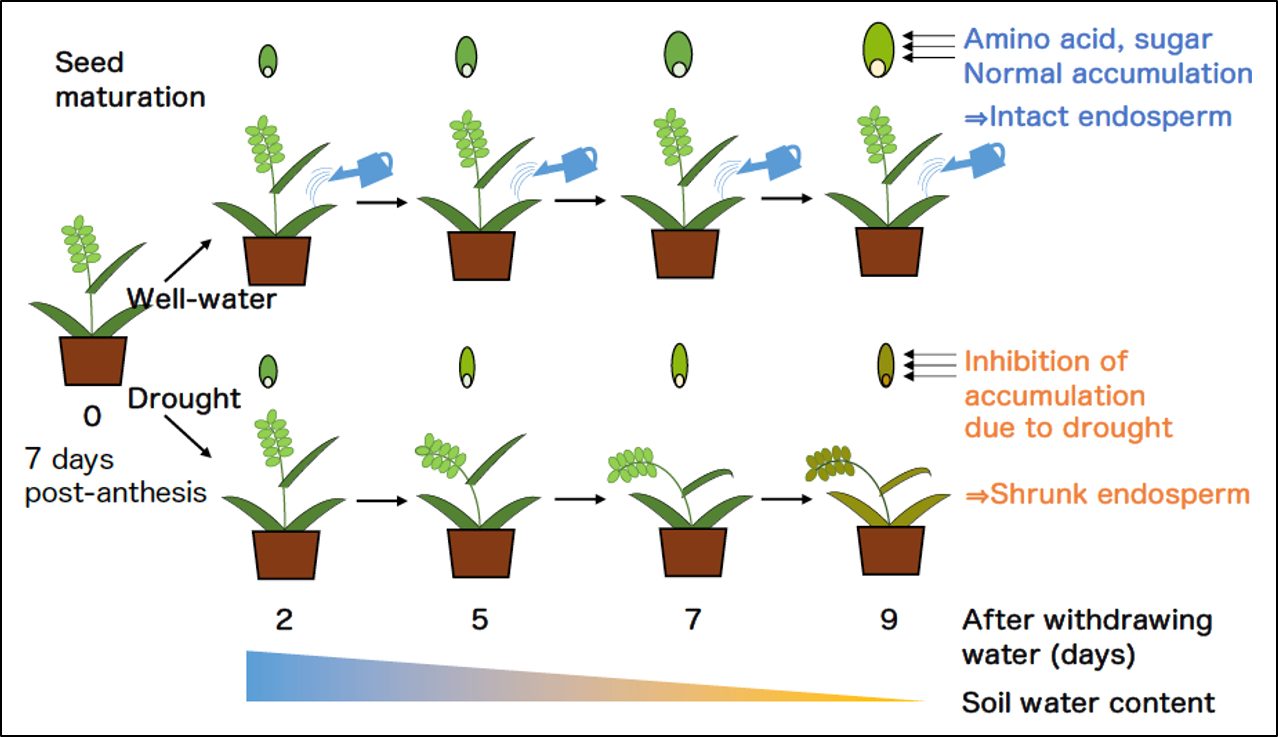 Outline of this research
Outline of this research
Research Background and History
Recently, global climate change has resulted in large-scale drought disasters and the expansion of deserts and other dry areas, which are the main causes of reduced yields in bread wheat production. Demand of bread wheat is increasing not only in developed countries but also in developing countries such as Africa with economic development, and in order to achieve a stable global food supply in the future, it is necessary to suppress the decline in yield even in droughts and dry areas. There is an urgent need to develop drought-tolerant bread wheat. In addition, since the seeds of bread wheat are crushed and manufactured into flour, the quality of the seeds is important from an industrial perspective.
So far, studies on the drought tolerance of various crops and model plants have been actively conducted, and sufficient information has been obtained. The reality is that there have been few studies that have addressed the molecular and physiological causes of the decline in starch and protein content, which affect quality. Therefore, this research team focused on the fact that bread wheat seeds grown in dry environments shrink in size and have lower yields. We attempted to elucidate the effects of drought stress on bread wheat seeds during the seed maturation process by the transcriptomics and metabolomics.
Research Content
This research team has cultivated bread wheat (TaPYLox), which can accumulate (overexpress) phytohormone ABA receptor protein in cell. The previous research found that seed shrinkage did not occur in TaPYLox under water-restricted environment (Fig.1). In this study, we focused on this trait and investigated how the gene expression or metabolite accumulation in the seeds changes as the drought stress progresses in the drought-tolerant TaPYLox and its control lines when seeds are subjected to drought stress during the maturation process after pollination. I checked to see if it would change.
As a result, the expression levels of genes involved in protein synthesis and starch synthesis, as well as amino acid synthesis such as proline and arginine, were found to be reduced by drought stress in drought-sensitive control lines (Fig.2 and 3)。In contrast, no decrease in these gene groups was observed in TaPYLox. In addition, differences in metabolites such as monosaccharides and amino acids linked to these gene groups have been observed. Thus, protein synthesis and starch synthesis in TaPYLox are carried out without interruption even under drought stress during the process of seed maturation. These findings also likely to suggest that the relevant amino acids are normally transported to the seeds in TaPYLox. In particular, proline is one of the main components of glutenin and gliadin, which are typical SSPs in bread wheat (Fig.4). Therefore, it was thought that the normal growth of the endosperm through the normal synthesis or transport of proline and sugars, which are ingredients of starch, would contribute to the normal maturation of the seed.
These results have revealed a mechanism that enables the production of high-quality wheat flour that is resistant to drought. In the future, we will aim to improve the production of sugars, amino acids, and proteins in seeds as target genes for breeding goals focused on wheat flour quality.
Future Prospect
Bread wheat is cultivated in relatively dry land and is a crop that is highly adaptable to arid environment, but the decline in bread wheat yields due to increasingly severe droughts associated with global warming is expected to continue to be a major issue. Bread wheat is not only in demand as food, but is also processed as flour into noodles and dough. Therefore, flour with high processing suitability is required. Environmental stresses such as drought and high temperatures affect the suitability of flour for processing, and there is concern that flour with reduced quality will lose its commercial value, leading to a decrease in income for wheat farmers. The results of this research are expected to lead to breeding target for suppressing damage to wheat caused by drought disasters and cultivating wheat as a raw material for high-quality flour that is unaffected by environmental changes.
Figures
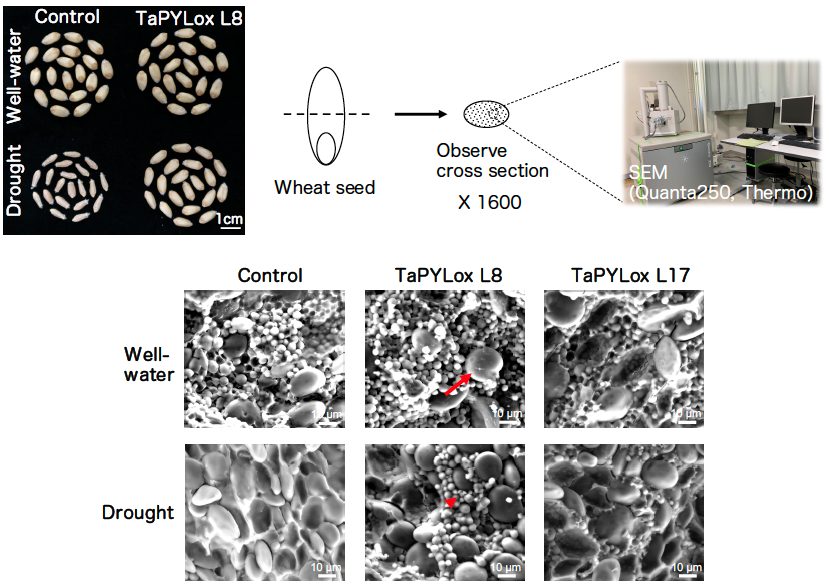 Figure 1. Damage to starch granules due to drought stress
Figure 1. Damage to starch granules due to drought stress
(Upper left picture)Control and TaPYLox seeds for each cultivation condition.
(Lower pictures)Scanning electron micrographs of cross sections of control and TaPYLox seeds. Seeds grown in well-water conditions have large (red arrow) and many small granules (red arrow head), but in the control, which is sensitive to drought, the formation of small grains is inhibited by cultivation in drought condition.
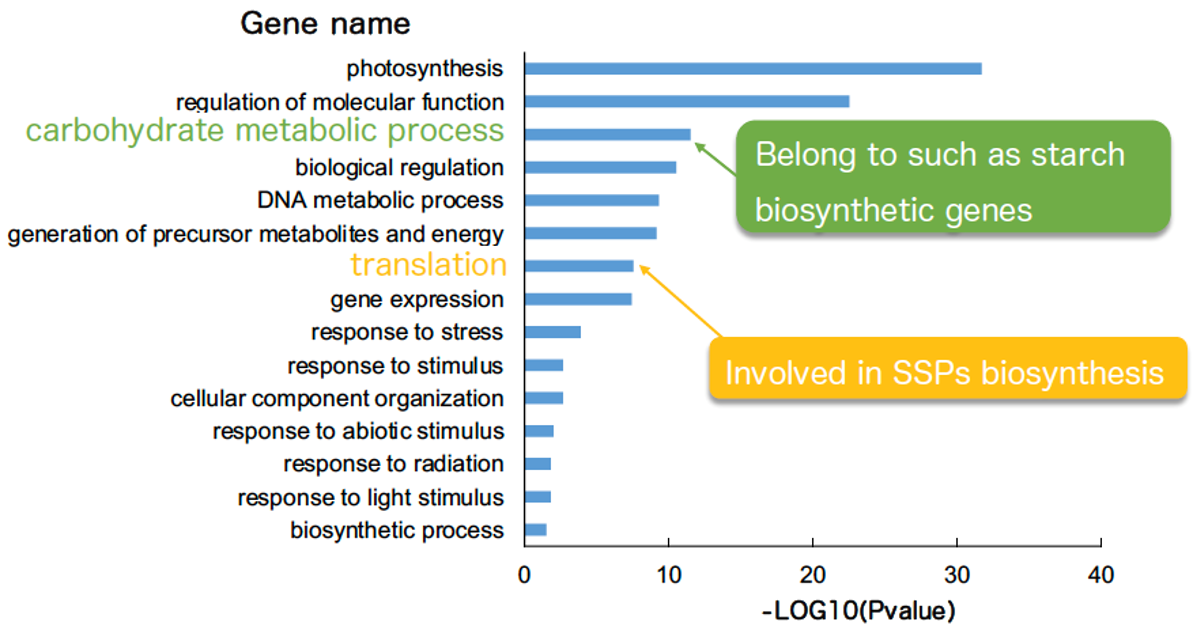 Figure 2. Gene ontology5) analysis using transcriptome data
Figure 2. Gene ontology5) analysis using transcriptome data
Among the transcriptomes analyzed using samples collected under drought condition, gene groups with higher expression levels in the TaPYLox were arranged in order. The p-value on the horizontal axis indicates the reliability of the detected gene group.
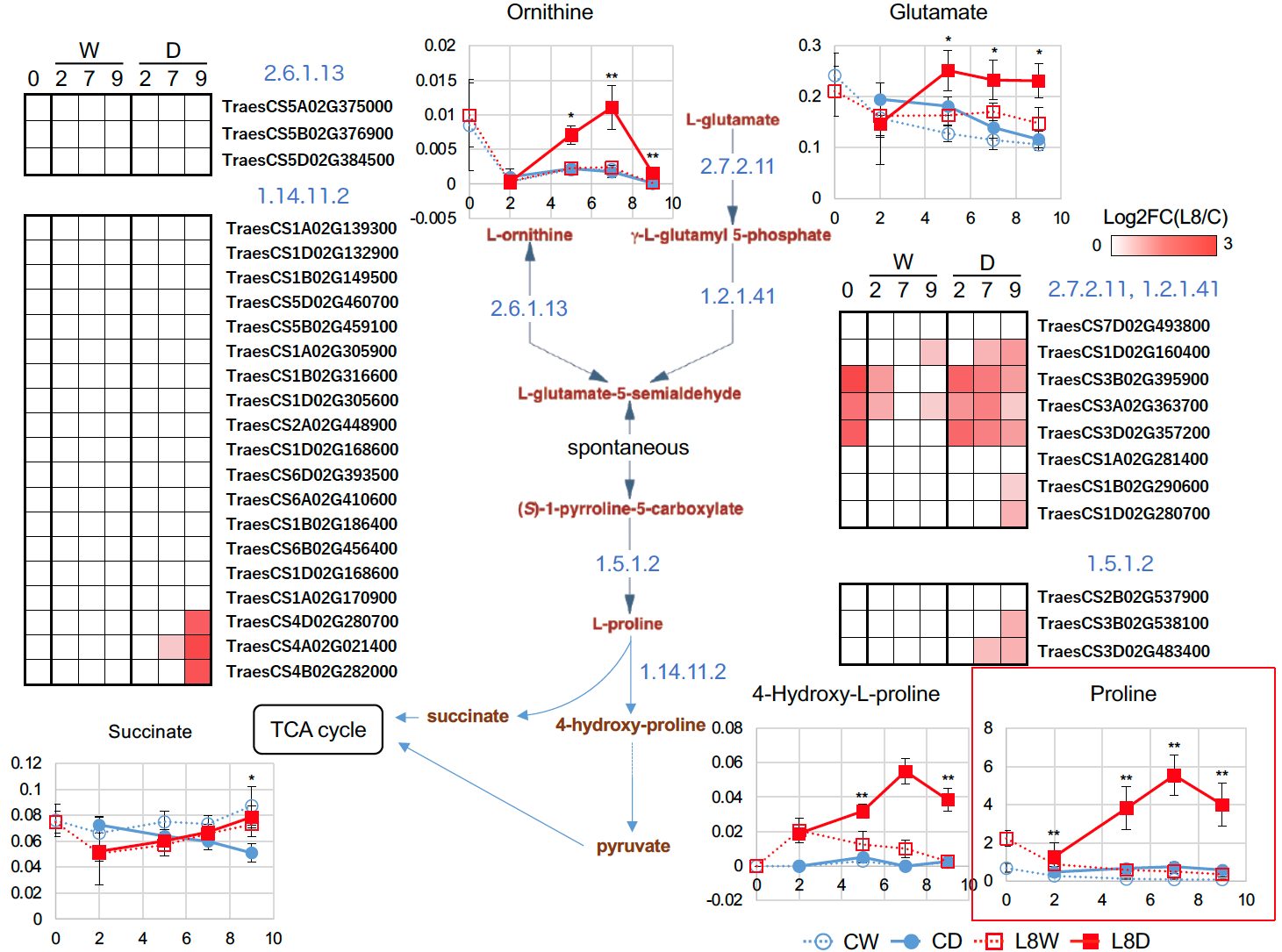
Figure 3. Gene expression and metabolite accumulation of the proline synthesis pathway
The color panels show the logarithm of the L8/C expression level ratio. The darker the red color, the higher the gene expression level in the TaPYLox than that of control. The line graphs show changes in the amount of metabolite accumulation. CW, control under well-water; CD, control under drought; L8W, TaPYLox under well-water; L8D, TaPYLox under drought conditions.
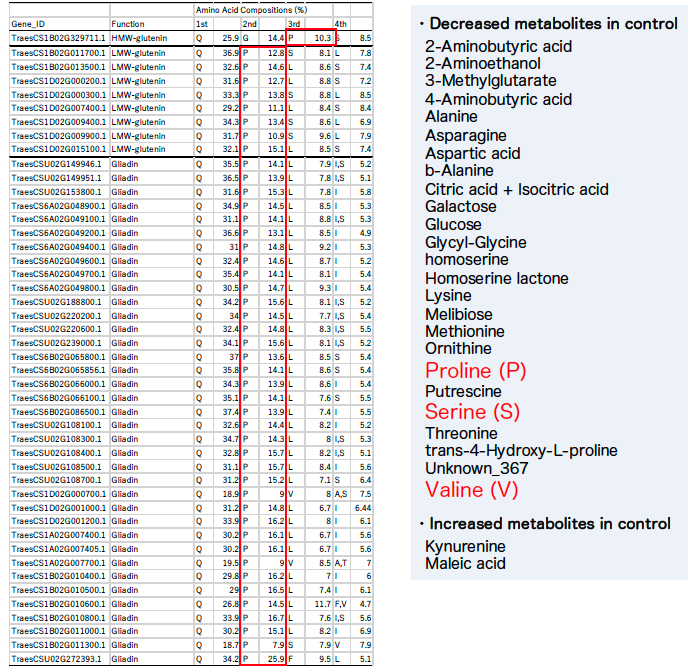 Figure 4. Amino acid composition of SSPs encoded in wheat
Figure 4. Amino acid composition of SSPs encoded in wheat
The table on the left shows the amino acid composition of SSPs encoded in wheat. The red frame indicates the content of P (proline), which is the second most abundant of all SSPs after Q (glutamine). The third and fourth most contain S (serine), L (leucine), V (valine), and I (isoleucine) mostly.
Acknowledgement
This research was supported by the following research grants.
Ryosuke Mega
JSPS KAKENHI Grant-in-Aid for Scientific Research(C) 20K06759
Arid Land Research Center, Tottori Univ. For younger researcher 03D2003
The grant for new research group, Yamaguchi Univ. 2021~2023
Glossary
1) Joint research team
Ryosuke Mega, Yamaguchi Univ.
June-Sik Kim and Masanori Okamoto, RIKEN
Hiroyuki Tanaka and Takayoshi Ishii, Tottori Univ.
Fumitaka Abe, NARO
Masanori Okamoto, Utsunomiya Univ.
2) Transcriptome
Total transcripts within the cell. By comprehensively analyzing transcripts (transcriptome analysis), we can understand which genes are expressed in groups depending on the experimental conditions, and we can identify the physiological responses or functions that are activated under those conditions. It becomes possible to understand genes involved in molecular functions.
3) Metabolome
The total amount of metabolites produced by living organisms. By comprehensively analyzing metabolites (metabolome analysis), changes in the entire metabolic pathway can be determined depending on the experimental conditions, such as whether the accumulation of a certain metabolite is due to the accumulation of precursor metabolites or the lack of accumulation of degradation products.
4) Seed storage proteins (SSPs)
Protein that stores nutrients contained in wheat seeds at ripening stage and needed during germination. Wheat is mainly composed of proteins called glutenin and gliadin, which are the raw materials for gluten. Gluten is a protein that determines the stickiness and elasticity of flour when mixed with water and made into dough. Flour is classified into strong flour, medium flour, and soft flour depending on the amount and quality of gluten.
5) Gene ontology
A term that unifies the vocabulary for describing gene attributes and describes gene-related information that transcends species. All vocabulary belongs to one of three categories: biological process, cellular component, and molecular function, and the hierarchical relationship between vocabulary is uniquely determined.
Article information
- Journal, Scientific Reports
- Title, Metabolomic and transcriptomic profiling during wheat seed development under progressive drought conditions
- Authors, Ryosuke Mega1,*, June-Sik Kim2, Hiroyuki Tanaka3, Takayoshi Ishii4, Fumitaka Abe5, Masanori Okamoto2,6
(*Correspondence, 1Yamaguchi Univ., 2CSRS, RIKEN, 3Tottori Univ., 4ALRC, Tottori Univ., 5NARO, 6Utsunomiya Univ.) - Publishing date, 11th Sep. 2023 (Online)
- DOI:https://doi.org/10.1038/s41598-023-42093-2
- URL:https://www.nature.com/articles/s41598-023-42093-2.pdf
Contact Information
<About research>
Graduate School of Sciences and Technology for Innovation, Yamaguchi University
Ryosuke Mega, Associate Professor
E-mail:mega*yamaguchi-u.ac.jp (replace * with @)
<About this news>
Public Relations, Yamaguchi University
E-mail: sh011*yamaguchi-u.ac.jp (replace * with @)